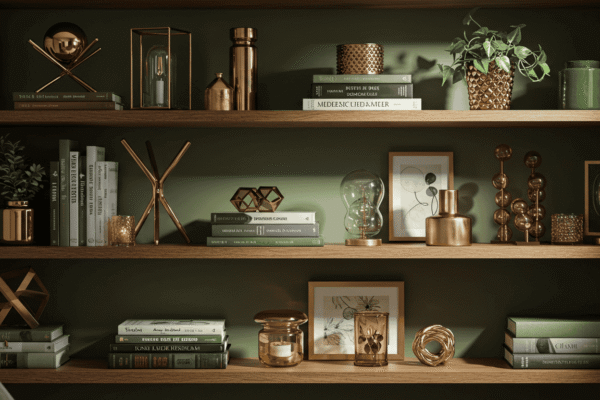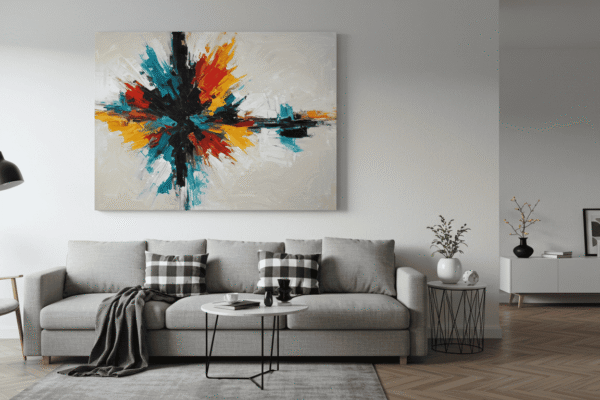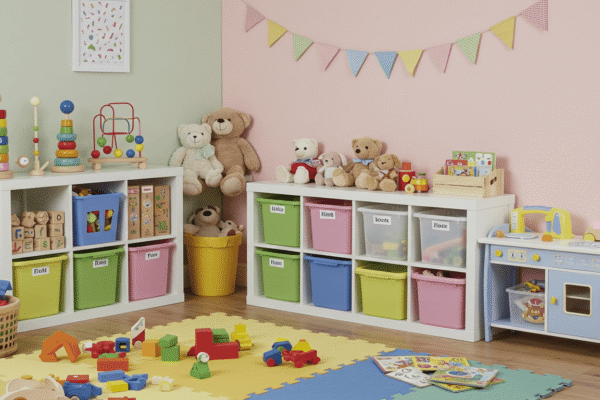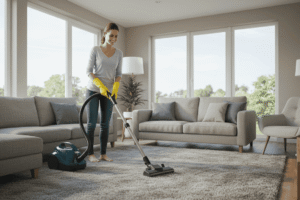Playroom decor isn’t just about making a room look cute — it’s about creating a space that inspires imagination, encourages learning, and grows with your child. Whether you’re designing for a toddler or planning ahead for a school-age kid, the right playroom setup can adapt over time without constant overhauls. In this guide, we’ll show you how to create flexible playroom decor that evolves as your little one grows — blending functionality, style, and a whole lot of fun.
Start with a Flexible Foundation
Creating a playroom that evolves with your kids begins with building a flexible foundation. The key is to design a space that can easily adapt as your child grows, changes interests, and develops new skills. Instead of committing to a fixed theme or style, focus on versatile elements that serve multiple purposes and accommodate different activities over time. This approach not only saves you from frequent redecorating but also encourages long-term use and enjoyment.
Choose Adaptable Furniture Layouts
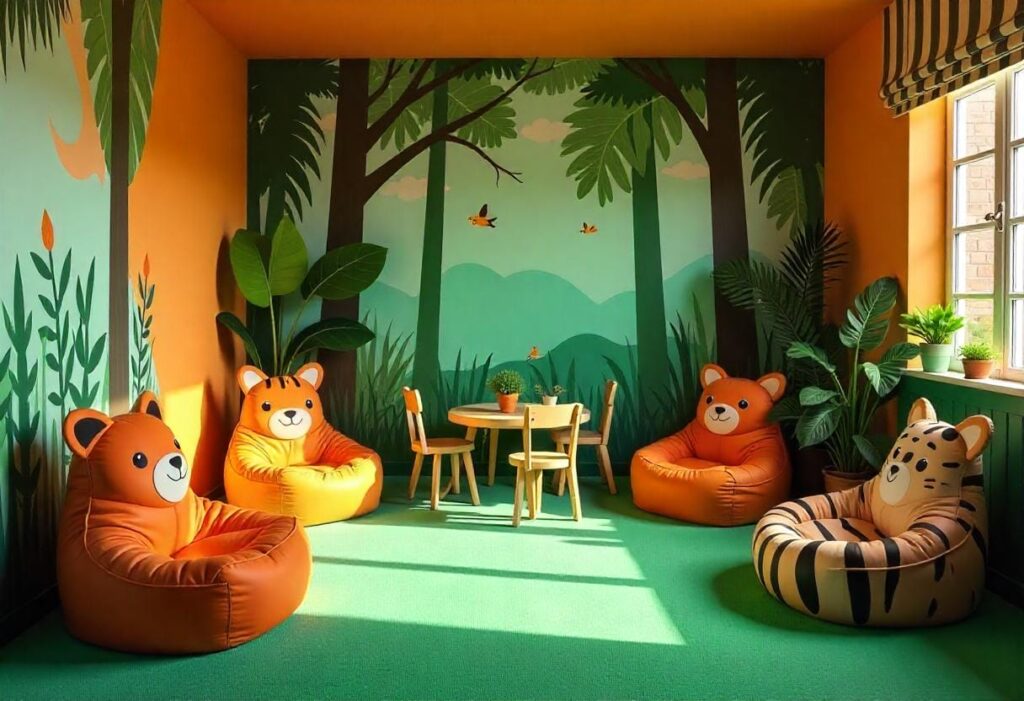
One of the best ways to achieve flexibility is through adaptable furniture layouts. Modular furniture, such as stackable shelves, movable storage units, and foldable tables, offers the freedom to rearrange the playroom to suit your child’s current needs. Modular pieces are lightweight, easy to move, and can serve various functions — for example, a low shelf can be a toy organizer now and later turn into a bookshelf or craft station.
Using floor plans that grow with your child’s needs means planning spaces that can transition from toddler play to homework areas without major changes. Avoid bulky or fixed furniture that limits movement. Instead, leave enough open floor space for active play, and use furniture with adjustable heights or multipurpose designs. This way, the playroom remains practical and welcoming throughout different stages of childhood.
Think in Zones, Not Themes
Rather than decorating around an age-specific theme that might quickly feel outdated, focus on creating activity-based zones within the playroom. Zoning the space according to different types of play and learning encourages variety and supports your child’s development on multiple levels.
The benefit of this approach is that zones can be adjusted, repurposed, or expanded depending on your child’s evolving interests. For example, a reading nook can start as a cozy corner with soft cushions and evolve into a small study area. An imaginative play corner might begin with simple dress-up costumes and later include more complex role-play setups. Similarly, an art zone can provide a dedicated space for creativity that grows from finger painting to crafting or even homework projects.
Below is a simple guide to help you organize your playroom zones according to your child’s age and needs:
| Zone | Age Range | Must-Have Elements |
|---|---|---|
| Reading | 2–10 yrs | Cozy mat, bookshelf, soft lighting |
| Art | 3–12 yrs | Table, washable surfaces, display wall |
| Imaginative Play | 2–8 yrs | Open floor, costumes, toy bins |
Using this zoning method ensures your playroom decor is both practical and inspiring, making it easier to keep the space fresh and engaging as your child grows.
Use Neutral Decor as a Base
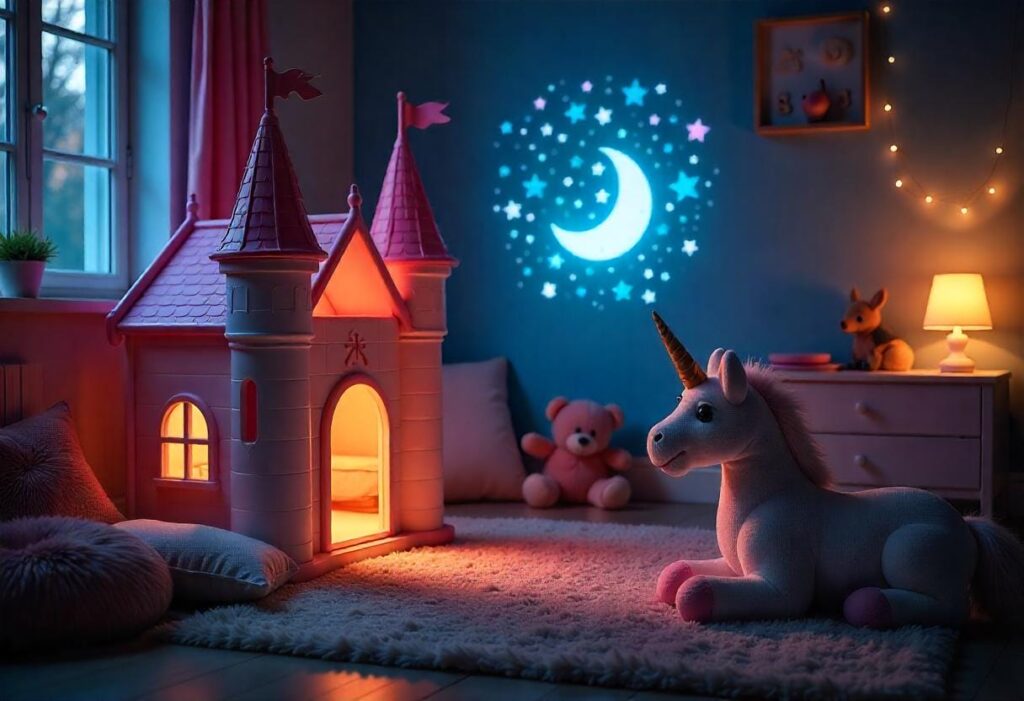
Building a playroom that grows with your child means choosing a foundation that stands the test of time. One of the smartest design strategies is to use neutral decor as the base. Neutral colors create a calm, versatile backdrop that can easily adapt to changing tastes and activities. This approach reduces the need for frequent redecorating and makes it simple to add personalized touches that reflect your child’s current interests.
The Power of a Neutral Palette
A neutral palette serves as a flexible canvas for your playroom. Light tones such as soft grays, warm beiges, gentle whites, and muted pastels work well for this purpose. These colors are timeless and blend effortlessly with brighter accent pieces or themed accessories as your child grows.
Using neutral colors allows for easy swaps as kids age — you won’t need to repaint walls or replace major furniture just because your child’s preferences evolve. Instead, you can refresh the room by changing smaller details, which saves time and money.
Colors like soft cream, pale gray, and gentle taupe are particularly effective because they provide warmth without overwhelming the space. These shades appeal equally to toddlers and tweens, providing continuity as your child moves from playful early years into more mature stages.
Accent with Age-Appropriate Details
While the base remains neutral, the key to keeping the playroom feeling fresh and exciting is to accent with age-appropriate details. Removable items such as wall art, rugs, cushions, and curtains can dramatically alter the room’s vibe without requiring a complete makeover.
For example, playful wall decals or removable wallpaper can add fun shapes or characters for younger children, while older kids may prefer framed posters or abstract art. Rugs and pillows are also easy to swap, offering a quick way to change textures and colors as your child’s tastes shift.
This strategy lets you maintain a cohesive, stylish space that evolves naturally with your child — making it simple to adapt the room to new hobbies, favorite colors, or seasonal themes.
Tip: Neutral doesn’t mean boring. Think textured walls, playful shapes, and subtle patterns that feel cozy at any age.
Plan for Smart Storage

A well-designed playroom needs more than just style—it needs smart, practical storage solutions that can keep up with your child’s changing needs. Effective playroom decor includes storage options that balance accessibility with organization, helping maintain a tidy space while encouraging independence and creativity.
Hidden and Open Storage Options
One of the smartest strategies is to mix accessible and tucked-away storage. Open bins and shelves let younger children easily reach their favorite toys and supplies, fostering independence and making cleanup a game rather than a chore. At the same time, hidden storage such as closed cabinets or baskets keeps clutter out of sight, maintaining a clean and calm environment.
As your child grows, their storage needs shift—from piles of toys to collections of books, art supplies, and hobby materials. Planning for this transition means incorporating versatile storage units that can hold everything from colorful building blocks to notebooks and craft tools. This adaptability helps your playroom stay functional and organized through different stages of development.
Labeling Systems That Actually Work
Labels can transform how your child interacts with their space. For toddlers, visual cues such as picture labels on bins or baskets help them identify where items belong without needing to read. This encourages sorting skills and responsibility early on.
For older kids, word-based systems introduce literacy practice while maintaining organization. Clear, readable labels on shelves and drawers help your child independently locate and return items, making cleanup smoother and fostering a sense of ownership.
Including both types of labeling supports your child’s growth and makes the playroom more intuitive for every age.
Visual Checklist:
- Baskets with picture tags
- Rolling carts for mobile storage
- Wall hooks for backpacks and dress-up clothes
- Stackable bins to maximize vertical space
- Drawer dividers to keep small items neat
Using a combination of these storage tools ensures that your playroom remains orderly, adaptable, and easy to maintain.
Design with Learning and Growth in Mind
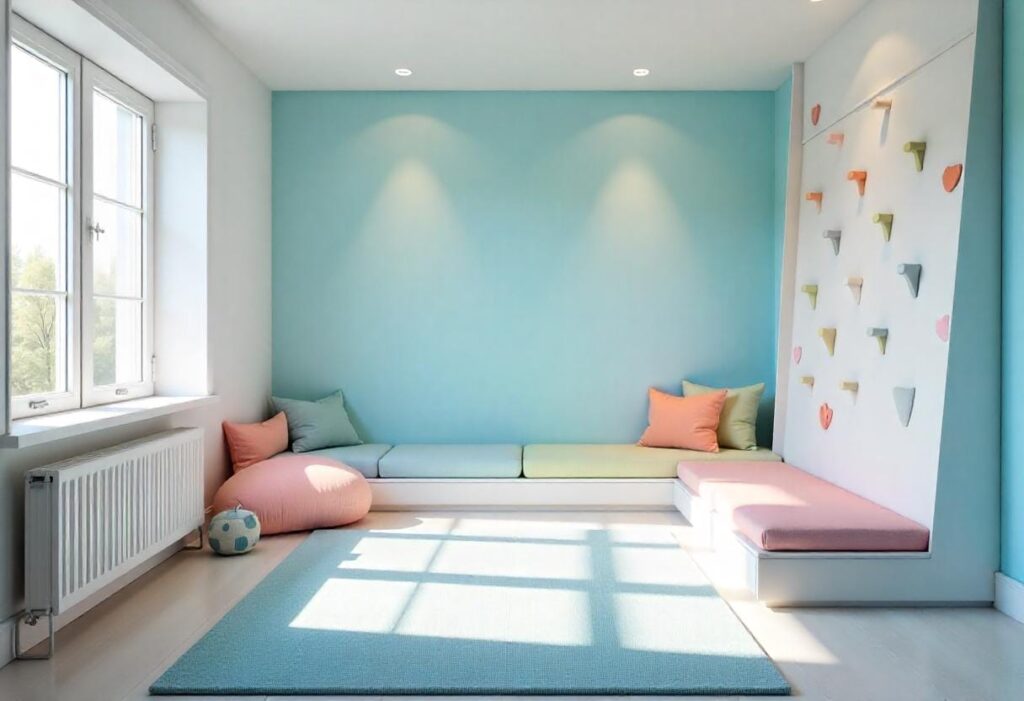
A thoughtfully designed playroom not only entertains but also supports your child’s development. Integrating elements that foster learning and growth will make the space valuable beyond just playtime. By designing with educational needs in mind, you create a room that evolves alongside your child’s changing abilities and interests.
Set Up a Learning-Friendly Corner
Creating a dedicated learning-friendly corner is a great way to encourage focus and creativity. Mini workspaces that transition into homework zones help your child develop good study habits early on. Choose furniture that grows with your child — for example, low desks paired with adjustable chairs provide ergonomic support while being adaptable for different ages and tasks.
This corner can start as a simple table for coloring and crafts, then evolve into a functional homework station as your child enters school. Adding storage for books, supplies, and notebooks keeps the area organized and inviting, making it easier for your child to settle in and concentrate.
Encourage Independence with Montessori-Inspired Ideas
Incorporating Montessori-inspired ideas into your playroom promotes independence and self-directed learning. One key concept is rotating toys, which keeps the play space fresh and prevents overstimulation. By limiting the number of toys available at once, children can focus better and engage more deeply with what’s at hand.
Open shelving is another hallmark of Montessori design, allowing children to see and easily access their toys and materials. This encourages responsibility, as kids learn to put things away in their proper places.
Creating self-serve art stations where children can independently access craft supplies fosters creativity and decision-making. Whether it’s a small shelf stocked with coloring books, crayons, and paper or a rolling cart filled with crafting tools, these stations empower kids to explore their interests at their own pace.
Rotate, Don’t Replace: Seasonal and Age Swaps
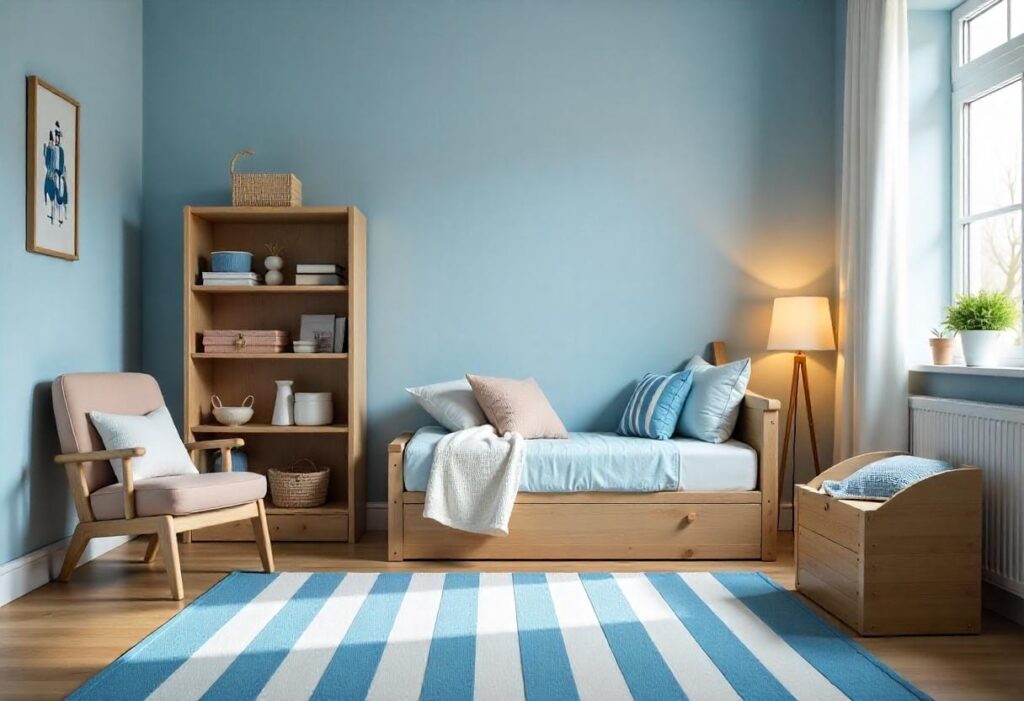
Creating a playroom that adapts to your child’s growth doesn’t mean constantly buying new items. Instead, the key is to rotate toys and materials to keep the space fresh and engaging without overwhelming it. This strategy saves money, reduces clutter, and supports your child’s evolving interests over time.
The Magic of Toy Rotation
Limiting the number of visible toys can actually lead to more engaged play. When fewer options are available, children are less distracted and more likely to dive deeply into the toys they have. This encourages creativity and concentration.
A simple way to implement this is by creating a hidden rotation stash—a dedicated storage area where you keep toys out of sight until it’s time to swap them in. By periodically rotating the toys in the playroom, you can renew your child’s enthusiasm and keep their play environment stimulating without buying anything new.
Age-Responsive Updates
As your child grows, their playroom should evolve to reflect their changing developmental needs and interests. For example, swapping out sensory bins filled with tactile objects for science kits supports learning in older children. Similarly, replacing pretend play sets with creative writing supplies or puzzles encourages new skills and hobbies.
Here’s a helpful guide to toy rotation based on age groups and developmental stages:
| Age Group | Suggested Rotation Items |
|---|---|
| 2–4 yrs | Blocks, puzzles, dress-up |
| 5–7 yrs | Board games, crafting, early STEM |
| 8–10 yrs | Journals, strategy games, building kits |
By planning thoughtful rotations, you create a dynamic playroom that evolves naturally with your child, keeping them engaged and supported at every stage.
Add Personality with Art & DIY Decor
A playroom should be a reflection of your child’s unique personality and creativity. Adding personal touches through art and DIY decor makes the space feel warm, inviting, and truly theirs. It also encourages kids to take pride in their environment and express themselves in fun, meaningful ways.
Let the Kids Contribute
One of the best ways to bring personality into your playroom is to create a kid-made wall art gallery. Dedicate a wall or section where your child’s artwork can be proudly displayed and rotated regularly. This not only showcases their creativity but also boosts their confidence and sense of ownership over the space.
Seasonal crafts are another fantastic way to add dynamic, rotating decor. Whether it’s handmade holiday decorations, nature-inspired crafts, or themed art projects, these pieces keep the playroom fresh and relevant throughout the year.
Easy DIY Decor Projects to Try
Simple DIY projects can add charm and functionality without overwhelming your schedule or budget. Consider creating fabric banners from scraps or old clothes, framing your child’s drawings to turn them into permanent artwork, or painting chalkboard sections on a wall or door for endless creativity.
These projects encourage family involvement and provide ongoing opportunities for your child to engage with their space in new ways.
DIY Prompt: Turn your child’s artwork into a seasonal banner. Rotate pieces monthly and let them curate their own gallery!
Make Space for Every Age (and Sibling)
Designing a playroom that grows with your kids becomes more complex when multiple children of different ages share the space. To create harmony and ensure everyone enjoys the room, it’s important to plan for multi-age use with thoughtful layout and zoning strategies.
Designing for Multi-Age Use
One effective approach is creating overlapping zones that accommodate a variety of activities and age groups without feeling cramped. For example, a quiet reading nook can coexist alongside a more active imaginative play area. Providing separate but visually connected spaces helps siblings share without competing for the same spot.
Layout tricks such as placing storage or low dividers between zones can minimize conflict by clearly defining boundaries. These subtle separations help children understand where each activity belongs, reducing the chance of frustration or mess spreading across the entire room.
Quiet vs. Loud Play Separation
Balancing soft play and book zones with areas designed for more active, noisy play is essential for a peaceful home. Soft furnishings like cushions, rugs, and bean bags create cozy corners where children can unwind, read, or engage in calm activities.
To further manage noise levels, consider sound buffering ideas such as thick rugs, heavy curtains, and acoustic wall panels. These materials absorb sound and help keep loud play from overwhelming quieter zones or other rooms nearby. Thoughtful noise control enhances everyone’s comfort and encourages longer, more focused play sessions.
Refresh Without Redecorating: Small Changes That Go a Long Way
Keeping your playroom feeling fresh and engaging doesn’t require a full redesign every time your child grows or seasons change. With a few small changes, you can transform the space quickly and affordably while maintaining the foundation you’ve built.
Simple Swaps with Big Impact
Sometimes all it takes is a few simple swaps to breathe new life into a playroom. Consider adding new wall decals, swapping out pillows for updated colors or patterns, or introducing seasonal accents like themed throws or curtains. These subtle updates can shift the mood of the room without overwhelming your child’s growing tastes.
Rotating decor items like rugs, cushions, or artwork keeps the environment stimulating and aligned with your child’s current interests. Plus, it’s an easy way to keep the space feeling relevant without the hassle or cost of major redecorating.
Incorporate the Child’s Growing Interests
As your child develops new passions, it’s important to incorporate their growing interests into the playroom design. Displaying achievements such as sports medals, art projects, or writing pieces gives them a sense of pride and ownership over their space.
Additionally, making room for emerging hobbies — whether it’s music, crafting, or science experiments — keeps the playroom functional and inspiring. This ongoing adaptation supports your child’s growth and encourages lifelong learning.
Before & After Inspiration Table:
| Before | After |
|---|---|
| Cartoon rug | Geometric pattern rug |
| Toy chest | Bookshelf with plants and books |
| Toddler table | Adjustable work desk |
These thoughtful swaps prove that even small updates can have a big impact on the look and feel of your child’s playroom, helping it grow gracefully alongside them.
Creating Playroom Decor That Evolves with Your Child
Designing playroom decor that evolves with your child is all about flexibility, creativity, and thoughtful planning. By starting with a neutral base, incorporating smart storage, and embracing adaptable elements like rotating toys and DIY decor, you create a space that grows alongside your little ones. This approach not only keeps the room functional and organized but also fosters independence, learning, and self-expression. With these strategies, your playroom will remain a joyful, inspiring place for years to come—perfectly tailored to your child’s changing needs and interests.


